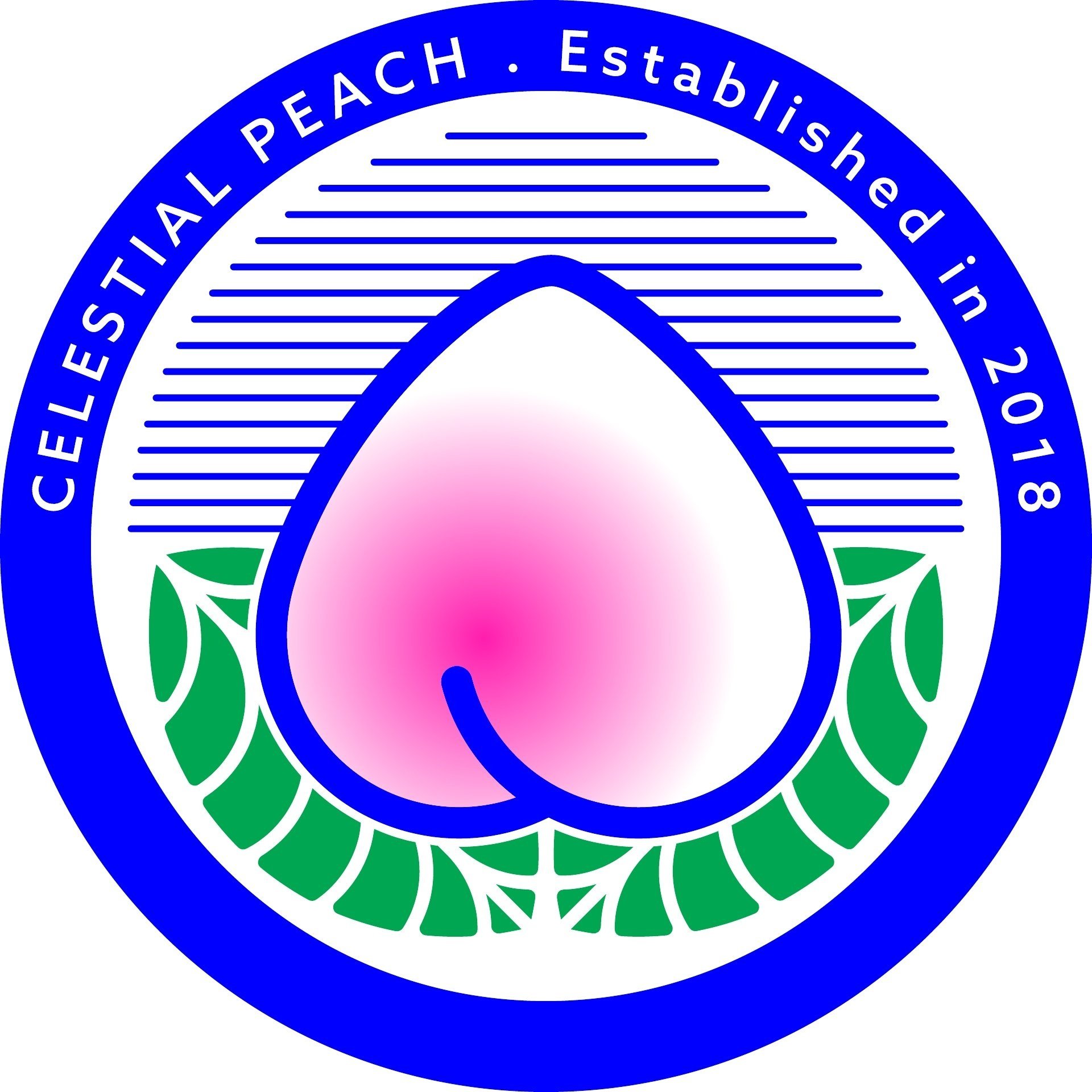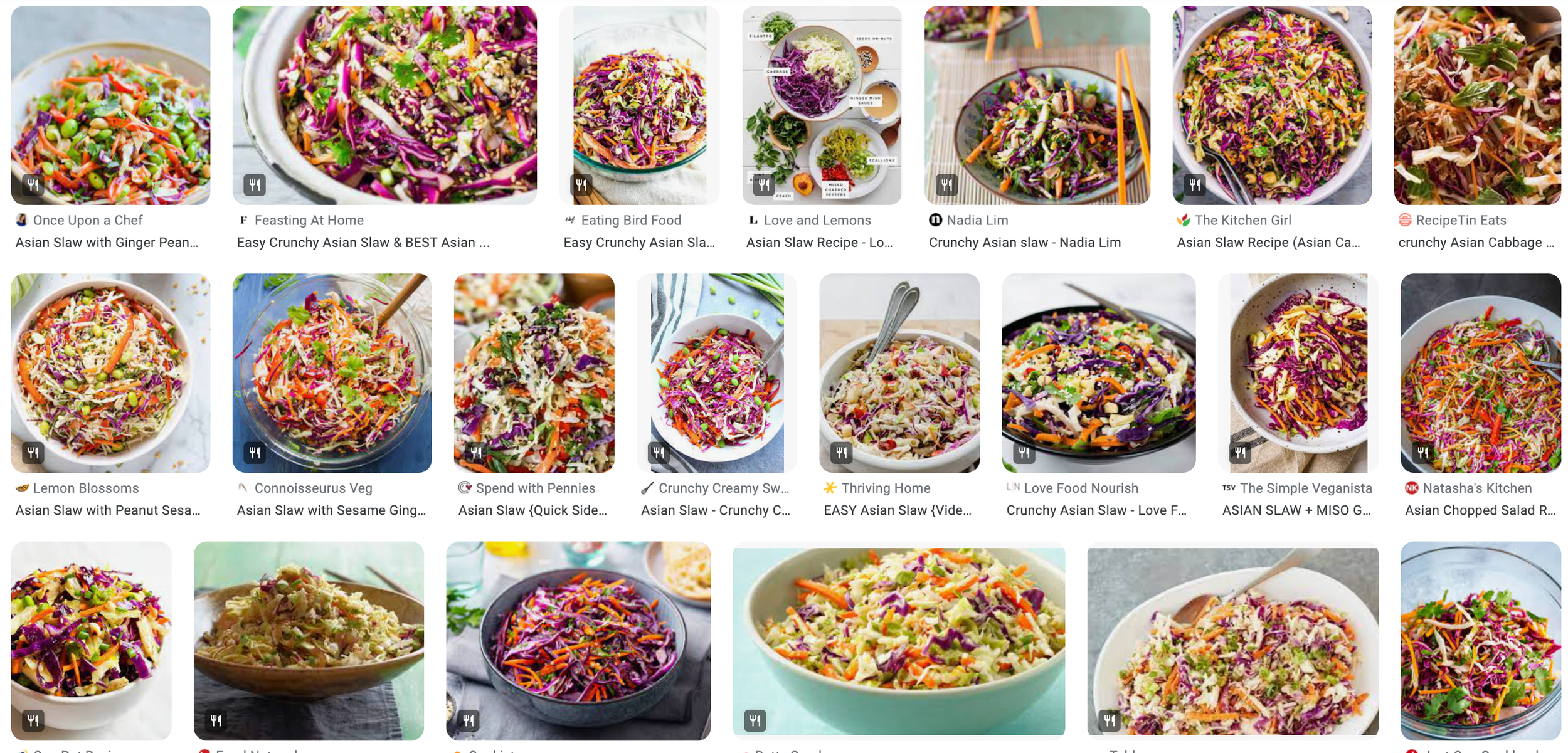Welcome to the Asian Slaw Alliance
A note from the editor:
A project that’s all about cabbage seems ambitious, farfetched even, but let’s not forget that I am someone who’s been running a congee convention for three years in a row now.
The inspiration for the Asian Slaw Alliance came when I was writing An A-Z Of Chinese Food, my monthly self-published essay series that explores how Chinese identity is translated and consumed throughout the world, using food as my lens. In ‘P Is For Pan-Asian’, it was this particular paragraph that had me asking: what’s so ‘Asian’ about ‘Asian slaw’?
I’ve always thought that the dishes that most typify the Pan-Asian trope are those that swing between cultural parody or ethnic flattening; they’ve either lost their origin story completely or never had one to begin with. For me that dish is ‘Asian slaw’, closely followed by the ‘Buddha bowl’, probably. What makes slaw purportedly Asian is the dressing, which - on a molecular level - is no different to a classic ‘European’ dressing such as vinaigrette; both utilise fat, acid, salt and a little spicy kick. And when people make an ‘Asian’ marinade, it will always lean towards a version of teriyaki, never one that involves yoghurt as favoured by those in western Asia. Pan-Asian is basically a shorthand for noodle bowls and healthy salads. Those who peddle these Pan-Asian creations are cherry picking healthy, sexy, colourful flavours over all the other Asian stereotypes (brown, oily, smelly).
I’m not one to bemoan the existence of misinformed stereotypes. In my opinion Asian slaw - if you’ve ever had it - is quite tasty. That’s why it’s so popular. What I like to do is to take those tropes and lean into them until they explode.
The Asian Slaw Alliance is a creative, trope-busting, food storytelling project that advocates for solidarity in diversity across all of Asia’s food cultures. With cabbage as my leitmotif, this project invites food lovers of Asian ancestry to reclaim and re-imagine the ‘Asian’ in ‘Asian slaw’ according to their personal heritage and memories.
About slaw itself
The term ‘coleslaw’ arose in the 18th century as an anglicisation of the Dutch term ‘koolsla’ (‘kool’ in Dutch sounds like ‘cole’) meaning ‘cabbage salad’. The 1770 recipe book The Sensible Cook: Dutch Foodways in the Old and New World contains a recipe attributed to the author's Dutch landlady, who mixed thin strips of cabbage with melted butter, vinegar, and oil. The recipe for coleslaw as it is most commonly prepared is fairly young, as mayonnaise was invented during the mid-18th century.
According to The Joy of Cooking (1997), raw cabbage is the only entirely consistent ingredient in coleslaw; the type of cabbage, dressing, and added ingredients vary widely. Vinaigrette, mayonnaise, and sour cream based dressings are all listed; bacon, carrots, bell peppers, pineapple, pickles, onions, and herbs are specifically mentioned as possible added ingredients.
What about Asian slaw?
You may have seen Asian slaw variously referred to as Chinese chicken salad in the US, or perhaps Asian/Oriental salad. In any case, it’s a Western-weighted construct that applies a generic or Sinocentric notion of what ‘Asian’ flavour is, to a European salad genre. The ‘Asian’ flavour is generally assumed to be: some combination of sesame oil, peanuts, sesame seeds, soy sauce, rice vinegar and so on. You may know that these ingredients are not universal to all Asian cuisines, nor do they even correlate to any particular flavour profile.
Asian slaw does have its roots in diasporic Chinese foodways, with sources saying it was popularised at Madame Wu’s Garden in Santa Monica, ‘a trendy Chinese restaurant that added the salad to the menu per Cary Grant’s request’. But at some point in the last half a century, ‘Chinese’ was replaced by the more nebulous ‘Asian’, and also started to be co opted by the health food industry due to its lack of mayonnaise (and calories).
Today when you look at the top Google results for ‘Asian slaw’ or ‘Asian salad’ you will see something that looks like this:
This article pretty much summarises everything that needs to be said about why we should be careful about racialising a salad that is just… a salad.
Ode to cabbage
It’s fitting that cabbage is the ideal vehicle to celebrate common connection and breadth of food cultures; it’s grown and eaten all across Asia and is cheap, hardy and easy to preserve. A plethora of cabbage salads and dishes do exist across the ~49 countries in Asia! While commonly referred to as a humble vegetable, I believe it deserves elevation of the highest form.


